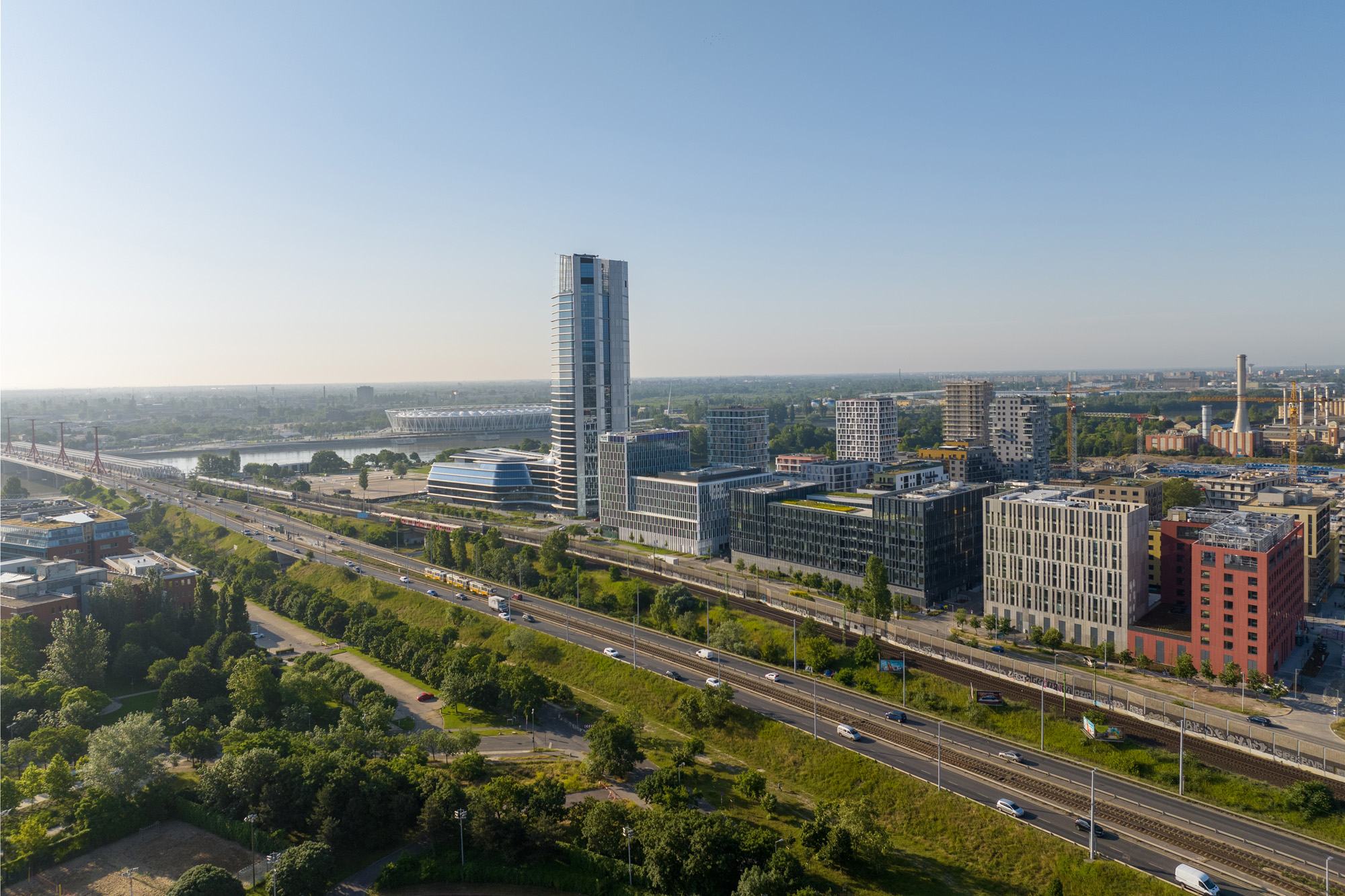
Location a Vital Element to Sustainable Buildings
Buildings that respond to the needs of the users while simultaneously interconnecting with their environment can be said to be sustainable. From the demand side, tenants and staff require offices that have direct public transportation access and are integrated into the urban infrastructure.

The Breeam Communities standard provides a framework to support planners, local authorities, developers and investors to integrate and assess sustainable elements in the master planning of new communities and regeneration projects, the third-party accreditation organization says.
“Sustainability regulations increase the liveability of urban spaces enormously. More green surfaces, less fuel-based traffic, and more alternative options are changing cities,” comments Zsombor Barta, president of the Hungarian Green Building Council (HuGBC).
“Also, it is expected that fewer individual cars will use the inner districts; therefore, a new concept needs to be developed on how to utilize the former parking spaces or garages wisely. This type of thinking is already in discussion in Vienna, for example. The CEE region is a bit more behind that, as individual cars are still very important in this region. But I am sure there is no other way than sustainability; sooner or later, we also have to re-think our city’s space utilization,” he insists.
Office development is being undertaken in urban locations integrated into the broader city as new business districts such as the outer boulevard in Budapest are emerging. Developers are delivering projects that are perceived as providing a reciprocal benefit for themselves, staff and residents in the vicinity.
At the same time, city authorities are looking to attract development that improves the economic environment, provides employment opportunities, and upgrades the infrastructure of an area, as has been the case with the Váci Corridor in recent years.
Core Factors
“With regard to the development of, for example, an office project, the most important factors are seen as the proximity and variety of public transport [options], the different amenities within walking distance, the business nature of the district and also accessible green areas nearby. With regard to transportation links, the most favorable is a metro within 400 meters; however, other fixed track modes of transportation are also advantageous,” says integrated building services provider DVM.
János Gárdai, CEO at GTC Hungary, says a guiding principle for it as a developer is to minimize the impact on the natural environment, local community and surroundings at every stage of the investment.
“In the process of our projects’ development, we revitalize the area and integrate it with the urban tissue. Examples of this type of project include Centerpoint, built on the site of a wood carpentry, and the White House, built on the site of a former crane factory,” he explains.
“When designing the foundations, we look for solutions to reduce energy consumption. We manage our buildings using BMS [building management system], which contributes to achieving energy efficiency.”
Gárdai says it is essential to adapt new projects to the existing urban environment to ensure they interact with the local community.
“We want the residents to benefit from our office buildings, whether through open green spaces or a post office. Moreover, when designing the greenery, we try to enrich the native flora. We are well aware of how good plants are for people’s health, both physical and mental,” Gárdai comments.
Hotel developments such as the Párisi Udvar project by Mellow Mood have contributed to the redevelopment of the infrastructure of the historic center, giving a commercial value while enabling the renovation and preservation of listed buildings, therefore enhancing and preserving the classic Central European look of the city.
Mixed-use Development
An example of a mixed-use development that integrates office, residential, services and leisure is BudaPart by Property Market on a 54-hectare site on the southern Buda bank of the Danube at Kopaszi Gát [Dam]. The project includes retail and hotel elements in addition to large green areas based on the concept of developing a new city quarter on what would be a prime development site in any city.
“In the latest phase of the BudaPart development, the focus is on the implementation of the project’s transport and community space improvements, further expanding the city center’s wide range of services and functions, and taking another step towards the realization of the 15-minute city concept,” says Mihály Schrancz, managing director of Property Market.
“Residents can enjoy the proximity of nature – the plants, the waterfront – in a real green belt. But, of course, adequate services are also needed so that the tens of thousands of people who will live and work here in a few years’ time will be able to find a crèche, kindergarten, and doctor’s office locally.”
BudaPart is expected to be completed by 2030, by which time it will feature 3,000 apartments in 15 residential buildings, around 250,000 sqm of office space in 12 office buildings, and 23,800 sqm of commercial space, all supporting around 25,000-30,000 city dwellers, according to Property Market. The office content of the project is Leed “Gold” accredited and aims for further energy efficiency. The concept was developed by the Danish Adept Studio, with sustainability elements included from the planning stage.
“The new model of urban living here will shift the focus from cars to pedestrians on the surface, with more space for community activities and a healthier environment. BudaPark also offers energy-saving and environmentally friendly public transport, electric car chargers are available as well as major car sharing services,” adds Schrancz.
Máté Galambos, leasing manager at Atenor, argues that the principles of sustainability in terms of location are pretty simple: An urban office district is best located where it is easily and quickly accessible from residential and retail areas, and there are means of public transport that support commuting to these destinations, all while being cost and energy-efficient.
“When it comes to architectural design, there is no single solution that supports sustainability; luckily, there are plenty of available resources and technologies that are extremely eco-friendly, and it is great to see that more developers and real estate funds decide to apply these. At Atenor, being the first office developer to obtain the Breeam “Excellent” sustainability rating in Hungary, we have been seeking solutions of architectural excellence to support sustainability efforts from day one,” Galambos concludes.